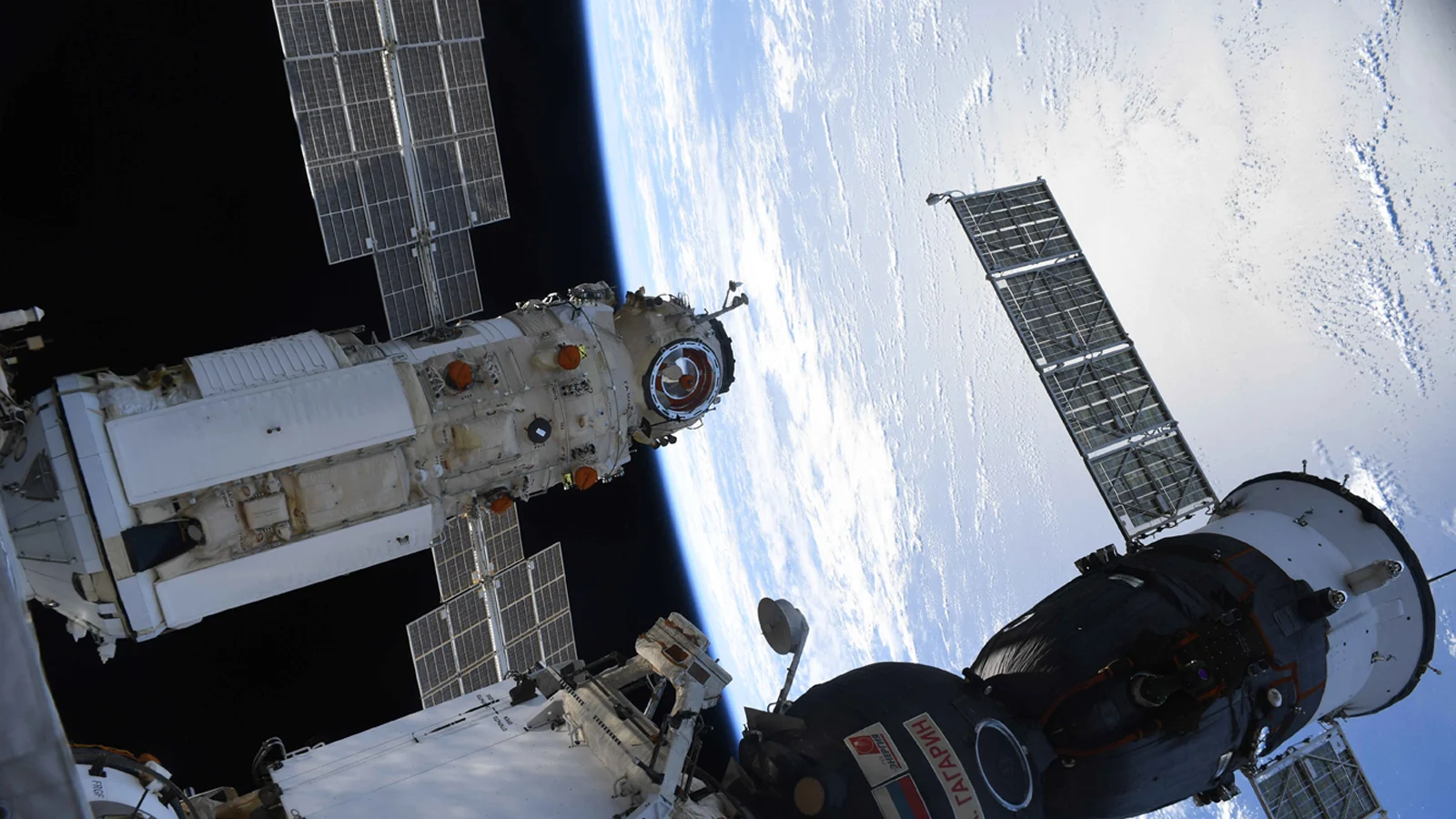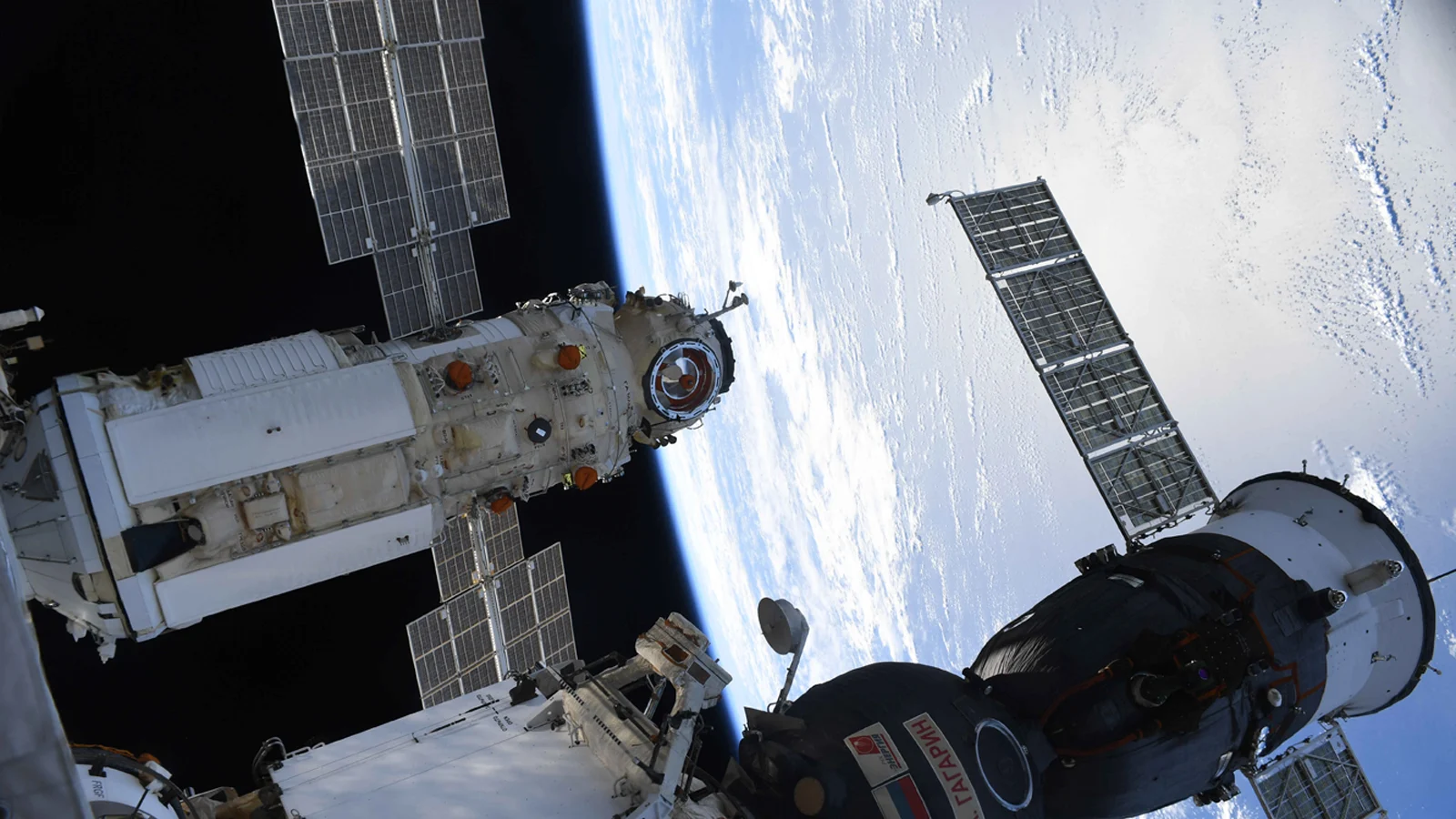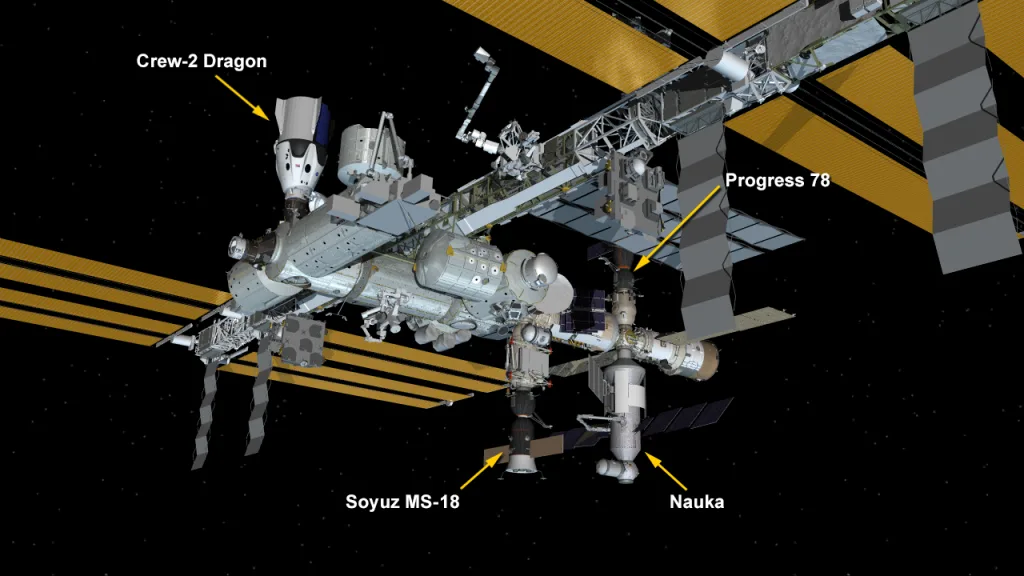
Space Station tumbled end-over-end due to Russian module thruster glitch
This was possibly the worse emergency the space station suffered in its 20+ years of operation.
A computer glitch has been blamed for the incident, which saw the International Space Station flip end-over-end in orbit.
Early in the morning on July 29, 2021, a new section of the space station arrived and docked to the Russian end of the orbital outpost. Nauka, or наука ("the science" in Russian), is also named the Multipurpose Laboratory Module (MLM).

Nauka docked with the ISS, with Soyuz MS-18 at the lower right. Credit: Roscosmos
A few hours after its arrival, while the Russian cosmonauts were checking Nauka's connections to the rest of the station, a computer glitch caused its thrusters to suddenly begin firing. Emitting a continuous stream of thruster gas, Nauka began pushing the station out of alignment, resulting in it tumbling end-over-end as it orbited the planet.
The crew on the ground - both at Roscosmos and NASA - worked quickly to get the situation under control. With no apparent way to turn off Nauka's thrusters, Roscosmos first activated the thrusters on the Zvezda Service Module in an attempt to counter-balance the thrust from Nauka. To gain the upper hand, though, they also switched on the thrusters of the docked Progress 78 cargo ship, currently on the exact opposite side of Zvezda from Nauka.

This computer simulation of the ISS shows the location of the new Nauka module in relation to the spacecraft currently docked or berthed at the station. In preparation for this docking manuever, the station was travelling in this orientation towards the right of the image, with Russian section as the leading end. Credit: NASA
In a report on Monday, Roscosmos called the problem "a short-term software failure."
Although NASA initially reported that the station was knocked only about 45 degrees out of position by Nauka's thrusters, it turned out to be quite a bit more once they assessed the incident in the aftermath.
Talking to the New York Times, NASA flight controller Zebulon Scoville said that the unexpected thrust resulted in the station performing a slow backflip. At around half a degree per second, the ISS turned a total of 540 degrees before the combined counter-thrust from Zvezda and Progress 78 could stop it.
From there, with still no way to shut down the out-of-control thrusters, they simply had to wait until Nauka ran out of fuel.
Now, flipping over is not unusual for the space station. It apparently performed a 180-degree flip sometime before Nauka's arrival to orient the Russian part of the station as the leading end. However, even though the station ended up roughly in its usual orientation (with Zvezda as the trailing end) by the time this incident was over, having your football-field sized orbital lab flip end-over-end one and a half times is not an ideal situation.
"This is one of the more serious incidents in the 24-year-history of the ISS," Jonathan McDowell, an astrophysicist at the Harvard-Smithsonian Center for Astrophysics, told George Dvorsky at Gizmodo. "The loss of attitude control in principle risks breakup of the complex."
With the incident now over, the station crew has accessed Nauka and are integrating it into the station. According to NASA, Nauka will serve as a new science facility, docking port, and spacewalk airlock for future operations.






